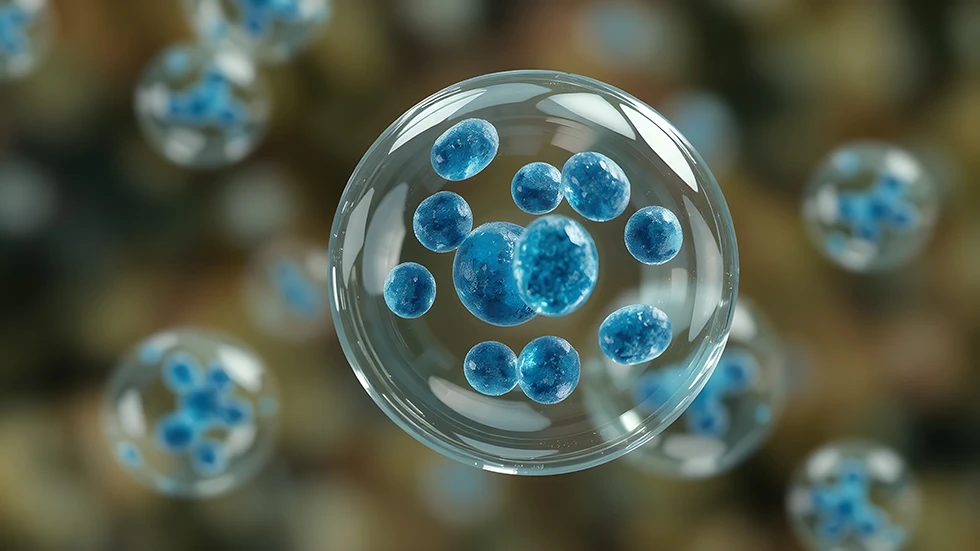| Item | Price | Qty | Total | |
|---|---|---|---|---|
 Loading Cart...
Loading Cart...PRP vs. Exosomes: What’s the Difference — and Can They Be Combined?

If you're researching the latest options in regenerative medicine, you've probably come across two popular options: PRP (Platelet-Rich Plasma) and Exosomes. Both are cutting-edge treatments that help the body heal naturally, and both have received a lot of attention in recent years, and for good reasons.
At Dr. PRP USA, we help providers across the country integrate advanced regenerative therapies with our industry-leading PRP kits and access to trusted exosome solutions. In this blog, we’re breaking down the difference between PRP and exosomes—and why combining them may be the next big step in healing and rejuvenation.
What is PRP?
Platelet-Rich Plasma (PRP) is an autologous treatment derived from the patient’s own blood. It has become a foundational tool in regenerative medicine thanks to its ability to accelerate healing and tissue repair using the body’s natural resources.
Here’s a quick overview of the process:
- A small blood sample is drawn from the patient.
- The sample is placed in a centrifuge to isolate and concentrate the platelets.
- The resulting PRP—rich in growth factors and bioactive proteins—is then re-injected into the targeted area.
These growth factors act as biological signals, activating the patient’s natural healing response, promoting tissue regeneration, reducing inflammation, and enhancing cellular function. PRP has shown excellent results in orthopedic injuries, hair restoration, aesthetics, and post-surgical recovery. Because it is autologous, the risk of adverse reaction or rejection is minimal, making it a safe and effective option across many applications.
A study from The Journal of Oral and Maxillofacial Surgery showed that PRP significantly accelerated soft tissue healing post-surgery, highlighting its power to jumpstart repair.1
What Are Exosomes?
Exosomes are much smaller than cells—but they carry big influence.
Think of them as tiny, bubble-like messengers naturally released by stem cells. Inside these microscopic bubbles are proteins, lipids, and genetic material that help other cells repair, regenerate, and communicate more effectively.
The exosomes used in regenerative medicine usually come from lab-grown mesenchymal stem cells (MSCs). Because they don’t contain any actual cells, exosomes are considered cell-free—making them a safe, consistent, and easy-to-administer option for regenerative treatments.
While PRP delivers a patient’s own growth factors to support repair and regeneration, exosomes enhance that process by delivering targeted signaling molecules that help guide cellular behavior. These nanoscale vesicles fine-tune the regenerative response, support anti-inflammatory pathways, and have demonstrated promising outcomes in early studies related to skin, joint, and nerve tissue repair.
A study published in Stem Cells and Development showed that exosomes derived from mesenchymal stem cells (MSCs) improved healing and reduced inflammation across various tissue models.2
PRP vs Exosomes - So, What’s the Real Difference?
Here’s a simplified comparison providers can use to explain it:
- PRP: Sourced from the patient’s own blood. It contains platelets and growth factors that broadly stimulate healing and tissue repair.
- Exosomes: Lab-derived, cell-free messengers that carry precise molecular signals to optimize and direct the body’s regenerative processes.
If PRP acts like the fertilizer that stimulates growth, exosomes are like the skilled gardener that guides the growth—ensuring everything regenerates in the most efficient and effective way possible.
PRP offers a biologically matched signal from the patient, while exosomes deliver standardized, high-purity communication to maximize the regenerative response.
Can PRP and Exosomes Be Used Together?
Yes…and that’s where the real magic happens.
Combining PRP and exosome therapy gives you the best of both worlds. You get the personalized regenerative signal from PRP, plus the powerful cellular communication support of exosomes. When used together, these two therapies work synergistically to:
- Enhance tissue repair and regeneration
- Reduce inflammation faster
- Improve skin tone and elasticity
- Support hair growth more effectively
- Accelerate recovery from orthopedic or musculoskeletal injuries
Where Are PRP and Exosomes Used?
Patients are seeing great results in areas such as:
- Hair restoration – PRP thickens hair follicles, while exosomes promote scalp health and cellular regeneration
- Aesthetics and facial rejuvenation – Together they boost collagen, improve skin texture, and support anti-aging
- Joint injuries and orthopedic care – PRP relieves inflammation, while exosomes help direct cell repair
- Post-surgical recovery – Many doctors are using PRP + exosomes to help patients heal faster with less scarring
And because exosomes used in this therapy are pre-packaged and derived from rigorously screened MSC sources, there’s no complicated lab work or stem cell harvesting needed. It's a safe and efficient option for patients looking to tap into the most advanced regenerative therapies available today.
At Dr. PRP USA, we supply PRP systems and regenerative solutions that help providers stay at the cutting edge of these combination therapies.
Want to Explore PRP and Exosomes?
Dr. PRP USA provides cutting-edge FDA-cleared PRP kits, training support, and resources for providers nationwide. We also offer trusted access to premium exosome products that can complement your practice. Give us a call at (844) 377-7787 (DR-PRP-US) today to learn more!
References
- Marx, R. E. (2004). Platelet-rich plasma: Evidence to support its use. Journal of Oral and Maxillofacial Surgery, 62(4), 489–496.
- Zhang, B., et al. (2015). Mesenchymal stem cells secrete immunologically active exosomes. Stem Cells and Development, 23(11), 1233–1244.


